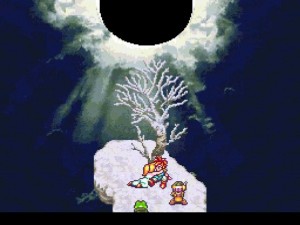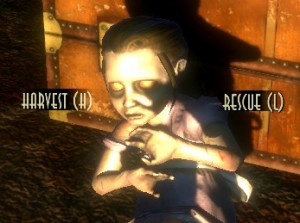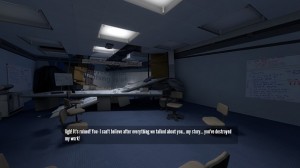-Ryan J. Hodge
For someone who enjoys a great story, is there anything better than a narrative that engages you from the very start? Imagine a world so rich you can almost smell the scents in the air, a delivery so clever it forces you to think in a way you never thought you would. I’m Ryan J. Hodge, author, and I’d like to talk to you about…Video Games.
Yes, Video Games. Those series of ‘bloops’ and blinking lights that –at least a while ago- society had seemed to convince itself had no redeeming qualities whatsoever. In this article series, I’m going to discuss how Donkey Kong, Grand Theft Auto, Call of Duty and even Candy Crush can change the way we tell stories forever.
What video games teach us about subverting a protagonist
In a conventional story, a protagonist is not just the main character in the story; he is our window into the universe the artist has created. Whatever his raison d’être in the story may be, it is ours to see him through to the end. For the story to move on without him is to beg the question why he was the protagonist at all. So it is with video games as well. Usually, when the game begins with a realized protagonist; it will end with that very same protagonist. It’s a position that the audience members (and even authors) often take for granted…and will often fail to realize how vulnerable a position it is.
‘Raising the stakes’ is a near-ubiquitous narrative device when telling a story. Usually it means that something about the status quo has changed for the protagonist to make his task that much more urgent/vital. In a classic ‘Three-Act’ structure, the stakes will continue to rise until the protagonist reaches the ‘lowest point’ (i.e.: the period where ‘all seems lost’). It is at this point that the audience is meant to sympathize with their hero the most and wishes to see him overcome the final opposing obstacle. In terms of gameplay, this might be translated into a sudden spike in difficulty where valuable equipment, companions, or powers have been taken away from the player.
However, even if he may die, the hero must always overcome his obstacles, right? According to the ‘monomyth’ theory detailed in Joseph Campbell’s The Hero with a Thousand Faces (1949); of course he will! Campbell himself summarized the monomyth thusly: “A hero ventures forth from the world of common day into a region of supernatural wonder: fabulous forces are there encountered and a decisive victory is won: the hero comes back from this mysterious adventure with the power to bestow boons on his fellow man.”(The Hero with a Thousand Faces, 2nd ed.,1968)
This is what I believed as the second Act of one of my favorite games, Chrono Trigger, drew to a close. After having spent hours besting horrors from across space and time, surely a hastily sprung trap from some just-introduced villain would simply be a bump in the road. At any second, we were going to figure a way out of this.
But we didn’t. My character was blasted to atoms, and rather than a ‘Game Over’ screen; the story simply continued.
As a player, this changed my entire perception of the game. Up until that point, whenever I had lost a battle; it had been because I failed. Either I wasn’t strong enough, or I wasn’t clever enough. For the game to introduce the fact that the protagonist could die no matter what I did; it also implied that anyone in my party –any of the colorful characters I had come to know and appreciate throughout our adventures- could be next.
We were at the lowest all right, but I wasn’t just sympathizing with the remaining heroes; I was empathizing with them. I felt the utter helplessness and doubt they felt as we realized that our adventure would have to be completed without the hero*.
In this way, taking the protagonist away did not only raise the dramatic stakes for the characters in the story; but for an empathetic audience as well. For by destroying the protagonist we, the audience, couldn’t know how or even if the ultimate challenge would be overcome.
Few writers seem willing to deploy such shocking devices on their audience, but Stephen King’s The Stand (1978) comes close; killing or incapacitating more than half of the main cast just before the climax. This not only subverts the initial assumptions that an audience may have about a story (i.e.: assuming which characters will ‘make it’ given that the story is about them), but also allows writers to explore certain emotional through-lines.
In Naughty Dog’s The Last of Us, our protagonist, Joel, loses his daughter in the opening minutes of gameplay. The effectiveness of this element is driven home by the fact that we are playing as Sarah (the daughter) in the beginning of the game, and are switched to Joel when she dies. Several hours of gameplay later (near half a year within the game’s story), Joel is grievously wounded as well, and we are switched yet again; this time to his precocious companion Ellie.
These moments leave us to wonder how the story will ultimately conclude. With all the losses, side-tracking, and death; is it even possible for our heroes to complete the task upon which they were set? Again, we are shown the folly of making assumptions about our protagonists as an audience and find ourselves completely at the mercy of the writer.
However, killing the protagonist is not the only method of subverting him. In 2K’s award-winning Bioshock, our player character finds himself stranded in the underwater city of Rapture. Its denizens have gone murderously insane except, seemingly, for a curiously polite man codenamed ‘Atlas’ who leads you out of Rapture’s many deathtraps. Gently bidding “Would you kindly,” Atlas earns your trust as he calmly talks you through solutions for the deadly scenarios your character is wont to blunder into. Even when it comes to killing the architect of this mad city, Andrew Ryan, your companion makes certain to utter this phrase.
Upon reaching Ryan’s office, however, Rapture’s mayor insists that “a man chooses and a slave obeys.”
“Come in, would you kindly?” Ryan greets you as you enter his office. “Stop, would you kindly?” He continues, and your character indeed stops. The gentleman continues to issue commands to you with increasing vigor. “Sit! Stand! Turn! Run!” always carefully appended with the phrase ‘would you kindly’. Slowly begin to realize the weight of its meaning. Throughout the game, we had assumed that Atlas was merely helping us, that it was his advice and our wits that allowed us to survive the horrors of Rapture.
It never occurred to us that our character might not be in Rapture on accident, that our actions weren’t even our own. We believed we were choosing when all we were doing was obeying. In this moment, our protagonist was not just subverted; but completely nullified. We were no longer witness to one man’s struggle for survival in a mad house beneath the waves, but a power play of the city’s surviving leadership through the eyes of a disposable pawn. No matter how much we squirm and struggle; our destiny will never be of our own making.
Bioshock is a favorite among students of game design for this introspective piece on the relationship between designer and player, but a more recent title explores the nature of this even further. The Stanley Parable is a rather short independently developed work wherein the player character (the eponymous ‘Stanley’) is guided through the story of the game by a narrator…
…or not.
As it happens, there are several points in the game where the player can diverge from the narrator’s instructions. What is interesting is that the narrator will attempt to correct the player, but the player may continuously choose to ignore him.
If he keeps this up, the narrator will actively attempt to undermine the player’s ‘rebellion’; at some points even narrating the player’s death. The ‘story’ has several endings, one that even allows the player to ‘defeat’ the narrator. However, has the player truly won? Once the ‘ending’ occurs, the game may only be restarted; thus nullifying all previous decisions. In this fashion, it’s arguable that there can be no way the player can truly ‘defeat’ the narrator. Each action the player can take within the game has been pre-ordained by the game designer, rendering all choice meaningless…yet meaningful, as choosing to either fight or obey the narrator only yields a portion of the possible story. To reveal other portions means making different choices in each playthrough.
One might believe that this allegory for predestination would be almost impossible to adequately translate into a literary fashion. Whether this is true or not, it important to consider, however, that certain attempts have been made. Run Lola Run (‘Lola rennt’ in original German) examines how a young woman’s destiny and the immediate destinies of those around her can be altered over the course of twenty minutes. It accomplishes this by presenting the same 20-minute span over and over, with the main character making differing critical decisions each time. Blind Chance (Przypadek in original Polish) explores similar circumstances as a man chases after a train.
However, perhaps the most surprising examining of predestination and subversion of a protagonist belongs to one of the most simultaneously loved and hated film series of all time: Star Wars.
Played in order (Ep1 – Ep6), Star Wars tells the story of a protagonist whose choices and ultimate destiny shape an entire galaxy. It is told to the audience that Anakin Skywalker has been prophesied to destroy the Sith. In many conventional narratives, such a hero would struggle long and hard against the minions of evil. He might doubt himself, but he would never stray from his path. No matter how bad things got we, the audience, would never question that he would ultimately succeed and fulfill the prophesy. However, in Star Wars, we are made to question the prophesy — to question Anakin’s destiny. Midway through the series, our protagonist switches sides! He becomes a Dark Lord of the Sith, and not as a ruse or ploy to get to the enemy; he becomes a full-on villain. It is only at the last possible moment when Anakin Skywalker finds his conscience and destroys the Emperor; fulfilling the destiny we, the audience, would have assumed long forborne.
While many a valid criticism can be leveled at the Star Wars’ story execution; the attempt itself is brilliant: [1]A hero, destined to destroy evil, [2]on the cusp of his goal, [3]forsakes his burden for personal gain,[4]and becomes evil, [5]remains evil until the evil forces stand at the threshold of victory, [6]then fulfills his destiny. Any saga that repeats this format is one unknown to this writer but, more importantly, these story elements demonstrate how the ‘protagonist’ does not have to be everything the audience assumes him to be.
However, it takes an extremely talented writer to create such a scenario and to execute it effectively. As such, understanding how one might be manipulated into making certain assumptions about their heroes is paramount; and there’s no person you’re more likely to make those assumptions about than yourself. So, whether you’re destined to be a true hero or a pawn in someone else’s scheme, go play some games and ask yourself if everything is as it seems. Who knows? It just might make you a better writer.
Ryan J. Hodge is a Science Fiction author and works for Konami Digital Entertainment US (His opinions are his own). His latest book, Wounded Worlds: Nihil Novum, is available now for eBook & Paperback.








